On the Antiques Roadshow, one thing I find really rather sad is when I’m handed a teddy bear in perfect condition to identify and value. Of course, it’s what every arctophile wants – a classic antique or vintage teddy bear in perfect condition.
Yes, the financial value is there, but what isn’t there is love, which is perhaps the most valuable thing in the universe. Years – even generations – of love. Never loved, never hugged, never dragged around as someone’s constant best friend. That’s what makes me sad. Poor, ignored Teddy, abandoned untouched on a shelf! That’s not what they were made for!
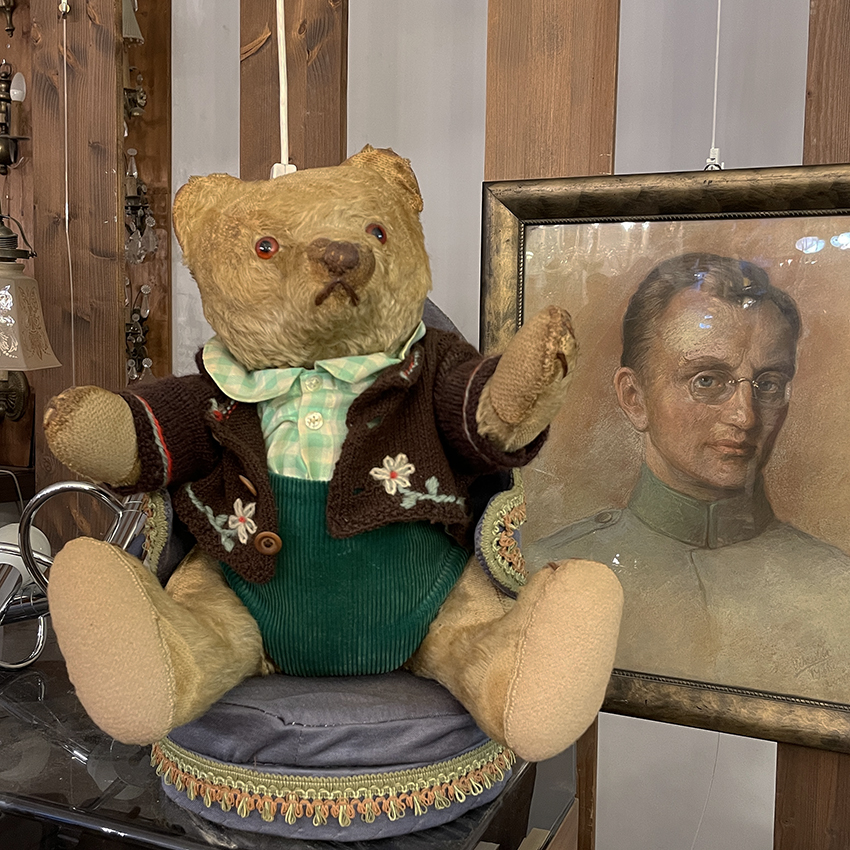
So my heart melted when I saw this bear in a junk shop in Berlin last month. Enthroned upon a silk-covered chair, he showed the love of ages all over and he caught my heart in a beat. So, what are we looking at?
The shape of his head, body and limbs and the material used tell us that he is a pre-war bear from the 1920s-30s. Before the Second World War, teddy bears tended to be barrel-shaped in body, with long, up-curving arms and ‘chicken drumstick’ legs. Heads were almost triangular, with pronounced snouts. And then, of course, there’s the humped back that everyone talks about. Adding together all the specific features, the form of this particular bear and the type of material he was made from tells me that he was by the renowned German company Steiff.
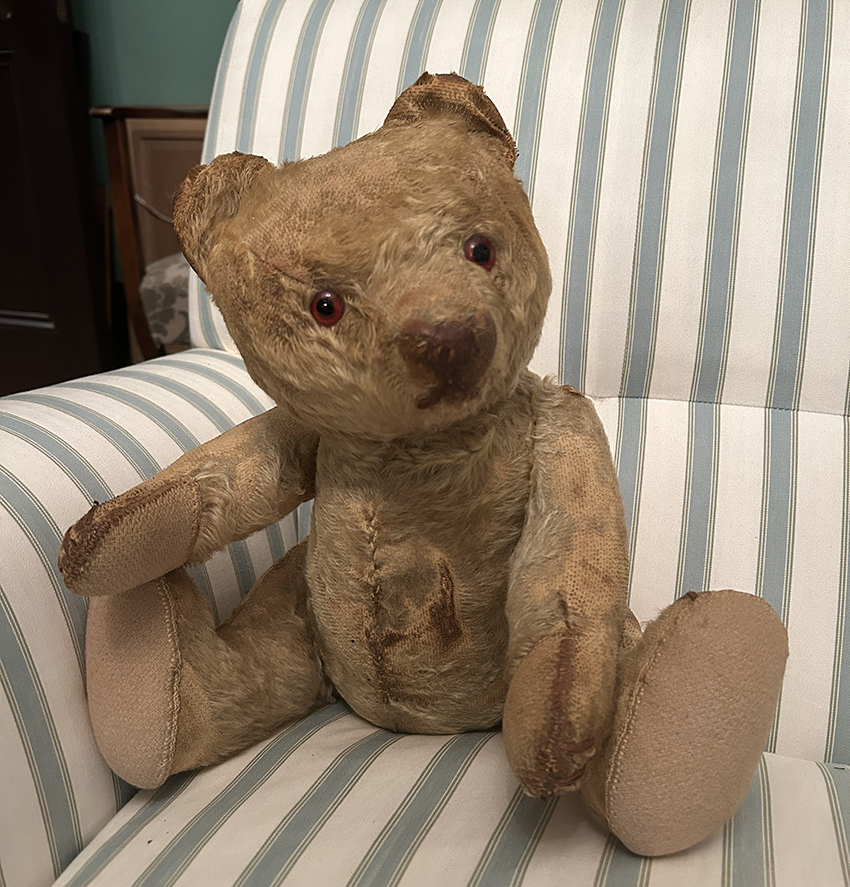
Founded in 1880, they became synonymous with the production of high quality, desirable teddy bears which they added to their range of stuffed animal toys in 1902. I felt inside the ear for the characteristic metal button, but it was gone – not actually unusual at all.
His bald patches show that he was lavished with love, probably by more than one generation. And the wear to the blond mohair fur is in all the right places, consistent with how a child would carry or play with him, or drag him around. Fake antique bears are often attacked with power tools meant for sanding to wear the fur down – but rarely is the wear in the right places or consistent with true play.
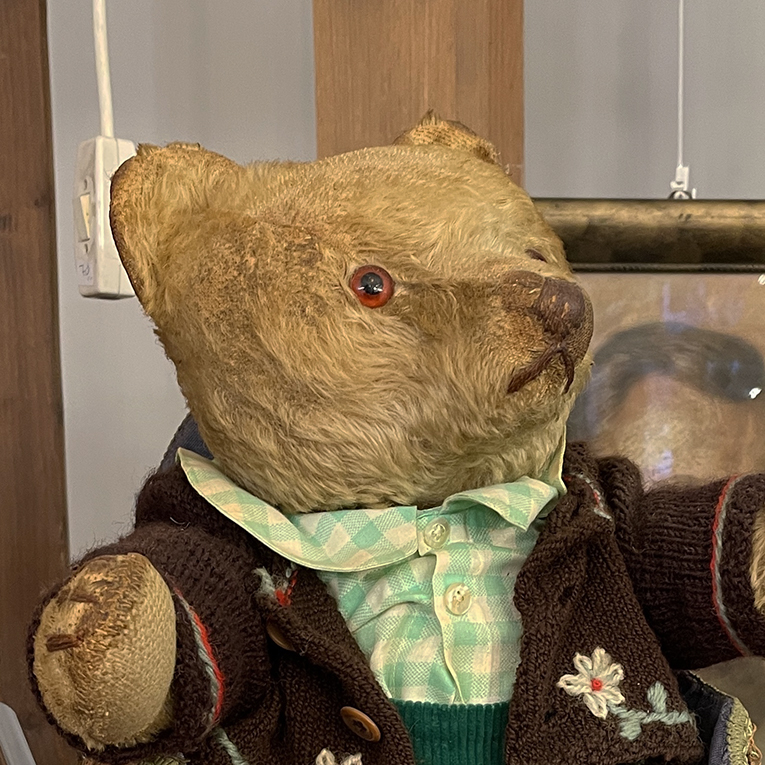
Moreover, he has been handled so many times by dirty or wet fingers and hands that parts of him have become darker and almost waxy. Look at his nose! How many times was his nose stroked to give that effect? By how many generations of one family? We’ve totally lost the ‘hand-me-down’ and ‘make-do-and-mend’ attitude of the past.
If you’re ever in doubt about whether a bear is truly old or not, hold his or her body tight up against your nose and give him a good, deep sniff. Although some makers have managed to make the wear look correct, or even use old mohair, one thing they can’t fake is the smell created by years and years of a bear being dragged around town and country, vomited on by babies, having drinks and food spilt on him on picnics – and that heady underlying ‘secondhand bookshop’ smell of dry dust and pure age. L’Eau de Nounours Ancien – it’s an unmistakeable scent. Once smelt, never forgotten – and never successfully faked.
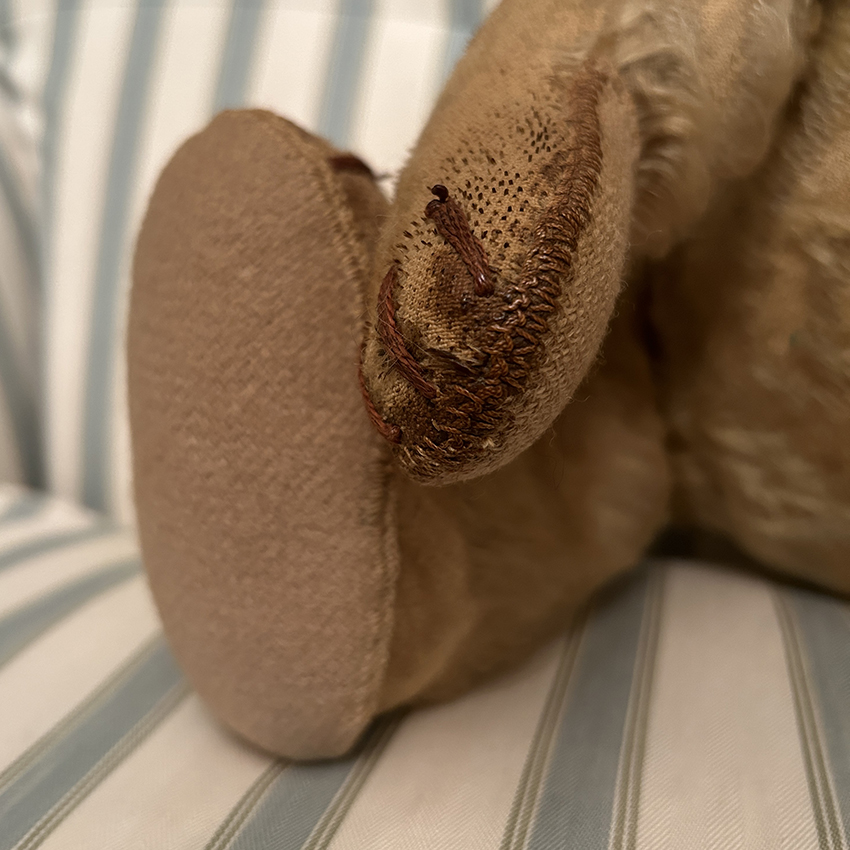
His paw pads have been replaced with good quality woven cotton fabric chosen to match his complexion. Someone paid attention – or paid someone skilled a good sum of money to do so – wanting this family member to continue to look good and be an active part of the family. Looking closer, one can see that this happened on at least one occasion, as the arm paw pads are darker than the leg paw pads, and the stitching of the arm paw pads is similarly (but slightly less) waxy and brown. Even better, he still retains his original eyes and stitched claws and nose, and his crunchy wood wool stuffing is still solid and maintains his original form, showing that he was treated with gentle respect – despite all the love that was showered upon him across nearly 100 years.
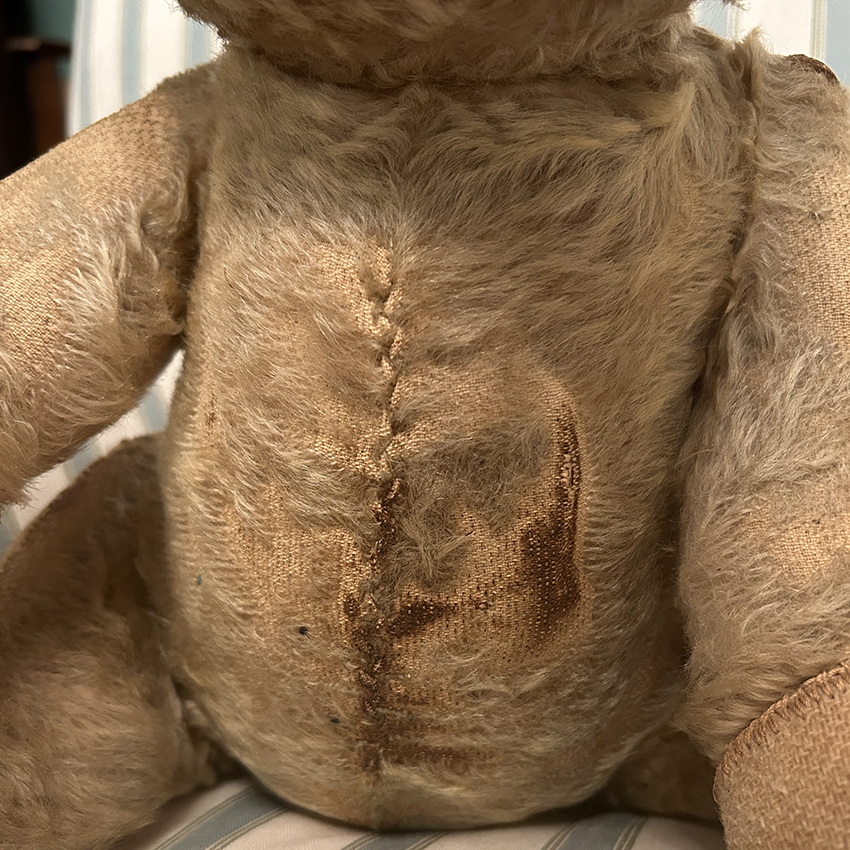
Then there are the clothes. Stitched and knitted at home probably after WWII, they’re in a typical Bavarian style. How smart! Taking them off (sorry, Mr Bear!), we can see that he had an operation at some point in his life. A vertical row of stitches on his chest shows that the growler inside must have stopped working at some point and someone asked their parents to find out why.
Apart from maker, size, colour and condition, one of the factors that governs desirability (sometimes above other factors) is the character of the bear. What does his or her expression say? Look at their face, their eyes, and their snout as they all count towards character and cuteness. How does he or she sit? What does the posture they settle into suggest? It’s always hard to capture this on camera, but there’s a quiet dignity about this near-centenarian. But his expression changes depending on the angle you look at him – and I like all of them!

He must have been owned by a wealthy family, as he would have been expensive to buy in the 1920s. He was made after the horrors of WWI and before the Nazi-driven terror of WWII. How much solace did he bring children living through those times – and after, considering his repairs? How many secrets and stories did he listen to, how many bombs did he hear, what did he think of the Cold War and the Space Race, and how did he feel when electronic toys arrived in the late 1970s and 80s? And then the internet…
But what happened next is anyone’s guess. Somehow he ended up for sale in a Berlin junk shop. I agreed €70 (£60) cash, which was all the cash I had on me. The throne came with him for free. Anyone who knows me, or reads my Instagram or Twitter feed, knows that I have a major soft spot for old teddy bears. But they have to be ancient, battered and worn with love. And if they’re repaired, so much the better. I just can’t resist these abandoned adorable time capsules full of character, love and history. Owners of worn and battered – but totally loveable – teddy bears, UNITE!

